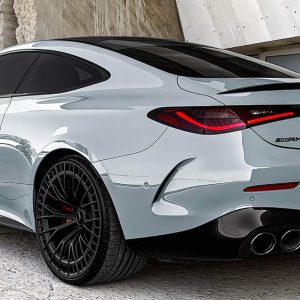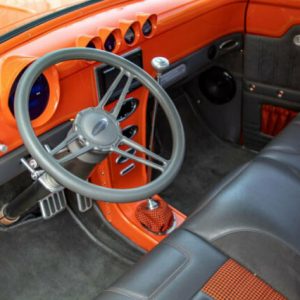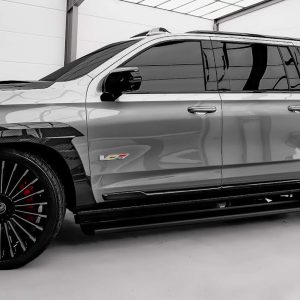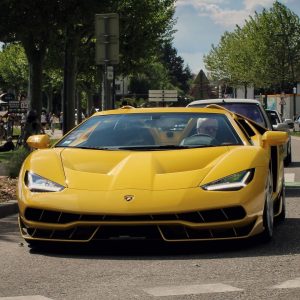Golden-era, drop-top Prancing Horses are always a sight to behold, and RM Sotheby’s has brought the showstoppers out of the stable for their upcoming Monterey sale this August. The big question is, which one of these Ferrari 250s and 400 would you take home?
The Geneva Motor Show has seen its fair share of wonders over the decades. Once the ultimate stage to present innovation and beauty, there were few better eras in this iconic show’s history than from the late 1950s into the dawn of the swinging sixties. Models from Aston Martin, Jaguar, Porsche and, of course, Ferrari sparked a new era of grand touring, with few leaving their mark quite like the 250 GT. While many models from what is arguably the golden era of sports cars have firmly cemented in automotive history, few have done it quite as elegantly as these three cabriolets, which are all set to stun the crowds as they head under the hammer at RM Sotheby’s upcoming sale that kicks off Monterey Car Week.



1959 Ferrari 250 GT LWB California Spider
We’ll start with the earlier of the three cars, this sleek 250 GT LWB California Spider which rolled out of Maranello in 1959. It’s important to remember the importance of the 250 GT foundations even before a car such as this was produced, as the platform had proved itself on the racetrack against some formidable competition. While these tin-top examples were dominating racetracks, many felt the open roads were the perfect setting to experience the thrill of the ultimate Ferrari, too.

We must thank a certain Mr John von Neumann for the 250 we see before us, a California-based importer and co-founder of the local sports car club who had become a Ferrari distributor on the West Coast. He proposed the idea of a dual-use, open-topped Ferrari that could be driven to its limits on the track, before being driven home just like some of Maranello’s great Berlinettas. It wasn’t long before Luigi Chinetti, the official Ferrari importer, heard about it, and soon the 250 GT California Spider was born. Unlike the standard 250 GT Cabriolet that was offered, the California Spider shared the Tour de France Berlinetta’s chassis and carrozzeria, with its effortlessly beautiful design and coachwork being the handiwork of the legendary Sergio Scaglietti.
A mere fifty examples of the California Spider were built on the long-wheelbase chassis such as this one, before Ferrari introduced its short-wheelbase platform, to which the California Spider was adapted. While both are achingly beautiful in their own way, may perceive the proportions as better suited the longer wheelbase, lending the model beauty above almost any other car on four wheels. Of course, we’re splitting hairs among two of the very best, but if only we had a SWB to directly compare it to…
VIEW CAR

1960 Ferrari 250 GT SWB California Spider
As it happens, RM Sotheby’s sale is headlined by such a car, this utterly stunning Ferrari 250 GT SWB California Spider from 1960. Taking the finest ingredients of the LWB and its race-proven siblings, the SWB California Spider boasted several performance boosts over its predecessor, most prominently a wider track, Koni adjustable shock absorbers, four-wheel disc brakes, and the latest version of the highly developed short-block V12. Visually, the changes were noticeable too, and now featured covered headlights and a factory removable hardtop. As the most advanced iteration of the design, the SWB California Spider was every bit as thrilling to drive as it was to behold, and quickly won the hearts of every celebrity from LA to London.


With just 56 examples produced, this very example happens to be the first to ever roll off the assembly line and showcased the competition-specification Tipo 168 engine. Finished initially in Grigio over a red leather interior, it was displayed by Ferrari at the Geneva Motor Show in March 1960. Afterward it returned to Maranello and was fitted with a black interior, and remains in the same colour combination, one that oozes grace and elegance. With an estimate between 16,000,000 and 18,000,000 dollars, more than the other two drop-tops combined, it’s likely this SWB is going to be the one to watch at Monterey!
VIEW CAR

1960 Ferrari 400 Superamerica SWB Cabriolet
Moving on from the California, we end the trio with this glorious Ferrari 400 Superamerica SWB Cabriolet, the third of just seven examples ever made in this specification. While many would see a reduced engine displacement for a new model as a step backwards, Ferrari knew a thing or two about perfecting what was already perfect, and the 400 Superamerica boasted a 4.0-litre V12 instead of the 5.0-litre engine found in its predecessor, the 410. This smaller engine allowed the car to remain agile as well as mightily powerful, and now it’s considered to be one of the best handling Ferraris from an era filled to the brim with truly wonderous driver’s cars.



Leaving Maranello in 1960, this example was finished in a beautiful, one-off colour combination of Verde Bottiglia over Rosso, which today has been meticulously restored to a better-than-original standard by renowned US-based Ferrari specialists Classic Coach and Greg Jones. Well-maintained and enjoyed by its current owner, it could easily be used on the road as a warm-weather weekend driver, or a trophy collector at many prestigious concours events around the world. Better yet, why not both?
VIEW CAR





